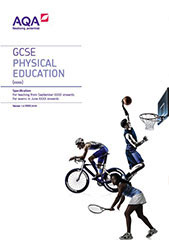3.1.3.2 The components of fitness, benefits for sport and how fitness is measured and improved
| Content | Additional information |
|---|---|
| The components of fitness | Definitions of the following components of fitness:
|
| Linking sports and physical activity to the required components of fitness | Understand and justify why the components of fitness (as stated above) may or may not be needed when performing certain physical activities and sports. |
| Reasons for and limitations of fitness testing | Reasons for fitness testing:
Limitations of fitness testing:
|
| Measuring the components of fitness | Knowledge of the main procedures of the tests used to measure the following
components of fitness:
Testing procedures refers to ‘how each test is carried out’ and includes reference to how the test is organised (when applicable) in relation to the following:
Evaluate whether or not these tests are relevant to performers in different sporting activities. |
| Demonstration of how data is collected for fitness testing | Understanding of how test scores are measured/recorded (eg in seconds, levels, centimeters, numbers). Definitions of the terms qualitative and quantitative, in relation to the collection of fitness testing data. Understanding that the quantitative data collected during fitness testing can be compared to national averages. |
